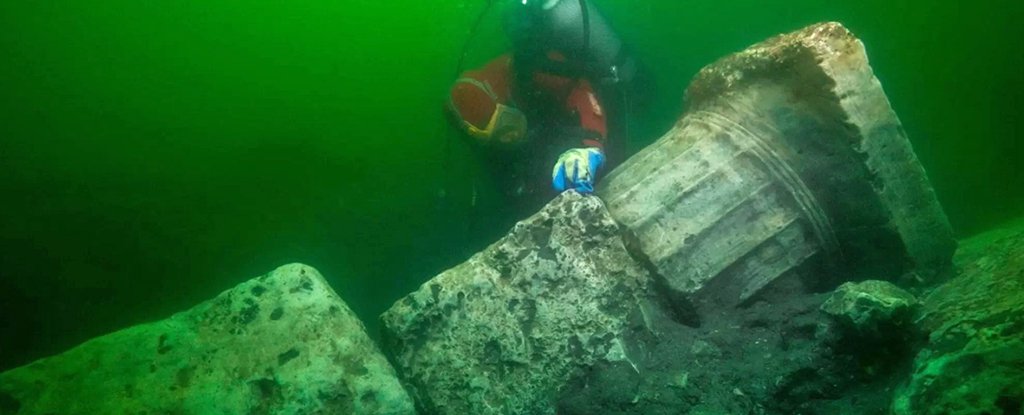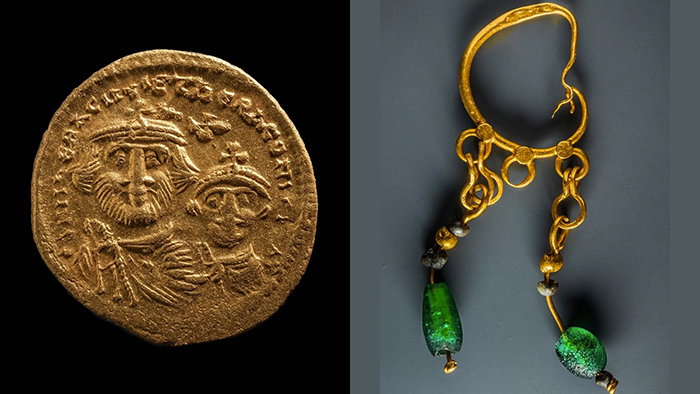Divers Uncover Ancient Temple Submerged Within The ‘Egyptian Atlantis’
The remnants of the ancient submarine temple were found in the ancient sunken town of Heracleion, off the north coast of Egypt, identified as the Atlantic of Egypt.
About 1,200 years ago the town sank into the sea but after it was discovered 2,000 marine archaeologists have been probing to uncover new parts of the settlements.
In the most recent discovery, Egyptian and European divers uncovered the ruin of a temple along with several boats holding treasures like bronze coins and jewellery.

Using a sophisticated scanning device, they revealed a new part of the city’s main temple, which has been completely destroyed. Remains of a smaller Greek temple, complete with ancient columns was found along with pottery from the third and fourth centuries B.C.E.
The bronze coins were from the reign of King Ptolemy II (283 to 246 BCE). Archaeologists also stretched their map of Canopus—another sunken settlement close to Heracleion.
They found the remains of several buildings, expanding the city by about two-thirds of a mile along with gold and bronze coins as well as jewellery including rings and earrings.

The team believe the artefacts date from the Ptolemaic dynasty (305 to 30 B.C.E) to the time of the Byzantine Empire, which began in 330 C.E. Researchers also investigated some of the many ancient ships known to exist at the site.
They found treasures including crockery, coins and jewellery in one now fully-excavated vessel. The team believe the wreck dates from the fourth century B.C.
The city of Heracleion, home of the temple where Cleopatra was inaugurated, was one of the most important trade centres in the Mediterranean area before it disappeared into what is now the Bay of Aboukir.
But 12 years ago, underwater archaeologist Dr Franck Goddio was searching the Egyptian coastline for French warships from the 18th century battle of the Nile, but instead stumbled across the treasures of the lost city.


After removing layers of sand and mud, divers discovered evidence of extraordinary wealth, painting a picture of what life was like in Heracleion, believed to have been at the centre of Mediterranean trade more than 1,000 years ago.
Although it was mentioned in classical texts, Heracleion lay undisturbed beneath the waters of Abu Qir Bay until it was mapped in 2000. Researchers spent four years charting the city, known as Thonis in Egypt, according to the lead researcher Franck Goddio.
After more than a decade of excavation, researchers were able to create a map depicting life in the ancient trade hub.
The research team, led by Dr Goddio have yet to establish what caused the city to go down, but the main theory is that the unstable sediments Heracleion was built on collapsed, and in combination with a rising sea-levels, may have caused the entire area to drop 12 feet straight into the water.
‘We are just at the beginning of our research,’ Dr Goddio told the Telegraph in 2013.
’We will probably have to continue working for the next 200 years.’





